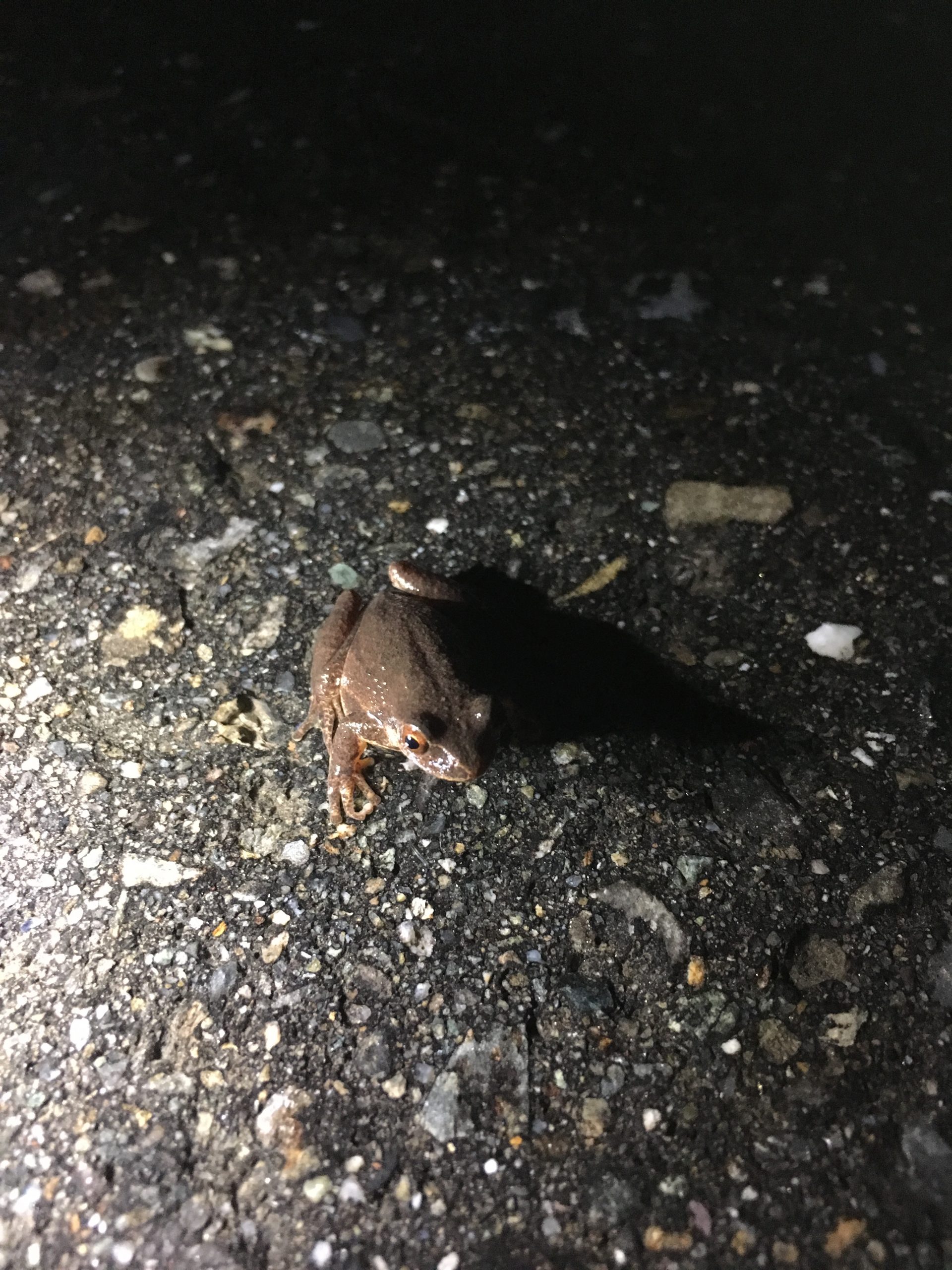
Updated March 21: Purchase one of the books mentioned below from Devaney, Doak & Garrett and be entered to win a free headlamp for your Big Night adventure!
FARMINGTON – Humans aren’t the only species who suffer from cabin fever, or who look forward to the first spring rains to wash away the last of winter’s snow. Sometime in the next couple of weeks, hundreds of thousands of amphibious Mainers will make their way out of hibernation and into surrounding vernal pools in order to find a mate and lay eggs.
The majority of the miniature migration usually takes place in a single night- when the temperatures and weather are just right- and includes a number of species such as peepers, wood frogs and spotted salamanders. Local scientists call it “Big Night,” and report frenzies of amphibians crossing roads to get to their mating grounds. The creatures lay their eggs in the temporary stands of water, returning to the same vernal pool they hatched from. The wetlands provide water without the accompanying fish- making them a safe environment for the eggs to grow in. Vernal pools in Maine are protected by law due to their importance in species survival, and therefore the ecosystem those species are a part of.

Amphibians play a major role in their ecosystems, and are among the most vulnerable of species. Urban sprawl has not done good things for Big Night. The development of roads through the path of amphibious migration paths has lead to many of the animals getting killed. Scientists and enthusiasts across the state have been getting involved to lend a hand to their tiny-legged neighbors. Nikolai Lane, a junior studying Earth and Environmental Science major at the University of Maine at Farmington, is one of those enthusiasts. Lane has played crossing guard for salamanders and frogs since he was in the sixth grade, living in North Yarmouth.
“Everyone I’ve taken out for a Big Night has had their minds blown by the number of amphibians out,” Lane said.
Going out on Big Night doesn’t only help thousands of amphibians survive and reproduce, it exposes community members to the importance of their local environments, and their role in helping to protect it, Lane said.
Lane brought the tradition to UMF, where it has taken off with staff and students. The UMF Natural Science Department had planned on making this a big year for soliciting volunteers and engaging the community, but the recent health scare has slowed that project. Professor Nancy Prentiss is encouraging people to still jump in, however, and says it could be even more beneficial than ever for people who are practicing social distancing.

Big Night can be difficult to predict. Lane says to use your ears- listen for the spring peepers, and Big Night won’t be far behind, on a rainy night after a warm day. Peepers can also be a good indicator of where to help out with Big Night. As you drive down the road, listen for the wave of the tiny frogs singing, and most likely a vernal pool is nearby. Some communities have a phone tree for spreading the word. Prentiss and Lane hope to offer a similar service next year.
For anyone who does choose to participate in Big Night, there are some specific ways to do so safely- both for the people and the animals. Head lamps and safety vests are recommended. High-traffic roads should not be considered. Be sure to keep your hands free of any chemicals, such as hand lotion, and always keep them wet when handling amphibians. Gently pick the animals up and carry them in the same direction they are heading. That last part is key, Lane said. Never turn an animal around. They know where they are going, your job is to simply taxi them.
Anyone interested in receiving email notification of Big Night can send a message to thedailybulldog@gmail.com with the subject of Big Night. A mass email will be sent out the day that Big Night will most likely take place. The following book recommendations for kids can be ordered through Devaney, Doak & Garrett Booksellers. Big Night for Salamanders by Sarah Marwil Lamstein, Salamander Sky Hardcover by Katy Farber and About Amphibians: A Guide for Children by Cathryn Sill.





Please let us know on big night
Our peepers start peeping right around April 21 every year (that’s with +/- 2 day tolerance). Not that I keep track of that sort of thing. Well maybe I do a little bit. Uughh, I need to get out more.
Great article, Amber! Now is our opportunity to be aware of the little people. We have a wetlands near us, and I took a walk today, but the area is still mostly snowed in. It will be so wonderful to hear the peepers again. As there are wetlands on both sides of the dirt road, I don’t recall seeing them trying to cross, but I will keep in mind “Gently pick the animals up and carry them in the same direction they are heading. That last part is key, Lane said. Never turn an animal around. They know where they are going, your job is to simply taxi them.”
So few people know where they are going.
Thank you.
Thanks Amber
Good story…
jo